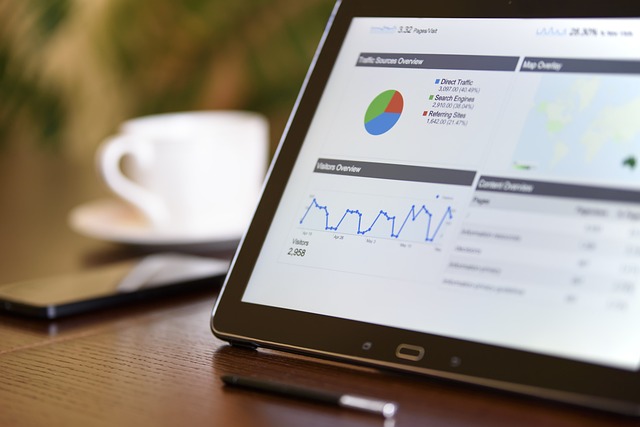Understanding Big Data
Big data refers to the vast volumes of data generated every second across various industries. These data sets are so large and complex that traditional data processing software struggles to manage them efficiently. This phenomenon doesn’t solely pertain to the size of the data but also includes its variety and velocity. As businesses, we constantly generate data through customer interactions, social media engagements, and operational processes. All this information can either overwhelm us or serve as a powerful tool. Understanding big data and effectively managing it can lead to significant business growth.
The critical aspect of big data lies in its ability to provide insights that were previously unattainable. For example, a retail company can analyze purchasing patterns by looking at data across various platforms. By leveraging analytics tools to process this data, businesses can identify which products are often bought together, peak shopping times, and even demographic trends. This level of understanding facilitates targeted marketing strategies and improves inventory management. In essence, big data transforms raw information into actionable insights that drive business efficiency and customer satisfaction.
Collecting Big Data
The process of collecting big data is multifaceted. Organizations must carefully design their data acquisition strategies to ensure relevance and accuracy. Sources of big data come from numerous touchpoints such as websites, social media, customer feedback surveys, IoT devices, and even transaction records. Collecting data isn’t just about gathering as much information as possible; it’s about gathering the right kind of data. Businesses must prioritize data quality and sources, which fosters reliable analysis.
To begin collecting big data effectively, companies should set clear objectives depending on their specific needs. For instance, if a company seeks to enhance customer experience, focusing on customer interaction data makes sense. On the flip side, a logistics company might delve into operational data to optimize delivery routes. Integrating various data sources into a singular platform, like a customer relationship management (CRM) or data warehousing solution, can make this process seamless. Tools like ETL (Extract, Transform, Load) play a vital role here, ensuring that the data collected is properly formatted and ready for analysis.
Analyzing Big Data
Once your organization collects vast amounts of data, the next challenge is analysis. Analyzing big data requires sophisticated tools and techniques that can handle the scale of information involved. Businesses often turn to artificial intelligence (AI), machine learning (ML), and advanced analytics to derive meaningful insights. These technologies can establish patterns, forecast trends, and highlight correlations that human analysts may overlook.
For instance, a financial service firm utilizing predictive analytics may forecast market trends based on historical data patterns. By examining fluctuations, the firm can make informed investment decisions and manage risk more effectively. This analysis extends beyond predictive capabilities. It can also enable businesses to perform sentiment analysis on customer feedback, directly impacting product development and marketing strategies. Recognizing customer sentiments and preferences through analysis allows for targeted approaches, ultimately leading to enhanced customer satisfaction.
Implementing Data-Driven Decisions
With insights gained from big data analysis, it’s crucial to implement data-driven decisions. This approach requires a cultural shift within the organization. Educating employees across departments on the importance of data in decision-making ensures that everyone understands and values this resource. Encouraging a data-driven mindset leads to better customer service, optimized operations, and enhanced strategic planning.
Businesses should regularly review the decision-making processes to ensure they align with the insights derived from data. For instance, if data shows that a particular marketing tactic yields high returns, doubling down on that strategy could be effective. Conversely, if certain efforts fall flat, it’s essential to pivot quickly. Emphasizing adaptability and willingness to change based on data prompts organizations to stay relevant and successful amidst an evolving market landscape.
Challenges in Leveraging Big Data
While big data offers tremendous opportunities, businesses must navigate several challenges to harness its full potential. One of these challenges is data privacy and security. With increasing regulations, such as the GDPR, businesses must ensure they comply with data protection laws while collecting and using customer data. Failing to do so not only risks heavy penalties but can damage a brand’s reputation and customer trust.
Moreover, the technological infrastructure needed to support big data initiatives can be costly and complex. Many organizations struggle with integrating different data systems due to incompatible technologies. Investing in the right tools and platforms, such as cloud computing and data lakes, is vital. These solutions provide the scalability necessary to manage and analyze vast data quantities efficiently.
Utilizing Big Data for Customer Insights
One of the most exciting advantages of leveraging big data is acquiring deep customer insights. Businesses can use analytics to explore customer behavior patterns, preferences, and trends. For instance, e-commerce companies can analyze browsing behavior to tailor the user experience, recommending products based on past purchases or similar customer behaviors.
Moreover, businesses can utilize big data to conduct segment analysis. By grouping customers according to demographic, behavioral, or psychographic factors, you can create targeted marketing campaigns that resonate with various audience segments. This hyper-personalization not only boosts conversion rates but also fosters customer loyalty. When customers feel understood and valued, they are more likely to return, benefiting the business in the long run.
Best Practices for Big Data Implementation
To optimize big data’s potential, businesses should adopt best practices for implementation. First, ensure you’ve clearly defined goals. A well-articulated objective serves as a guiding star when collecting and analyzing data. Without clear goals, it’s easy to become overwhelmed with data without leveraging it effectively.
Investing in the right tools and technologies is also crucial. Utilizing robust analytics platforms enhances your data analysis capabilities allowing your team to derive insights quickly and accurately. Tools like Tableau, Power BI, and Google Analytics provide powerful visualizations that make sense of complex data sets.
Finally, continually educate and train your team to stay updated with trends and best practices in data management. A well-informed team will be more adept at identifying opportunities and potential pitfalls when working with big data.
The Future of Big Data in Business Growth
The future of big data in driving business growth appears promising. As technology continues to advance, the tools available for data collection and analysis will become even more sophisticated. The integration of AI and machine learning will empower businesses to make real-time data-driven decisions, enhancing operational efficiency and customer satisfaction.
Moreover, we can anticipate a growing importance placed on ethical data use. As consumers grow more privacy-conscious, businesses that prioritize transparent data practices are likely to gain a competitive edge. Building trust with customers through ethical data handling reinforces brand loyalty and ensures long-term success.
Conclusion
Leveraging big data represents a profound opportunity for businesses seeking growth. Although challenges persist, the ability to make data-driven decisions can vastly improve your competitive advantage. By understanding the intricacies of big data, collecting relevant data, analyzing it effectively, and implementing it thoughtfully, organizations can navigate the complexities of the modern market landscape.
FAQs
- What is big data?
Big data refers to large and complex data sets generated from various sources, too complex for conventional data processing tools to manage effectively. - How does big data contribute to business growth?
Big data provides insights that help organizations make data-driven decisions, enhancing operational efficiency, customer experience, and marketing strategies. - What tools are used for big data analysis?
Tools like Hadoop, Tableau, Power BI, and various machine learning frameworks assist organizations in processing and analyzing vast amounts of data. - What are the key challenges of using big data?
Challenges include data privacy concerns, the need for advanced technology infrastructure, data integration issues, and the requirement for skilled personnel. - How can businesses ensure they use data ethically?
Businesses can adhere to data protection regulations, maintain transparency about data usage, and prioritize customer consent in their data collection practices.



